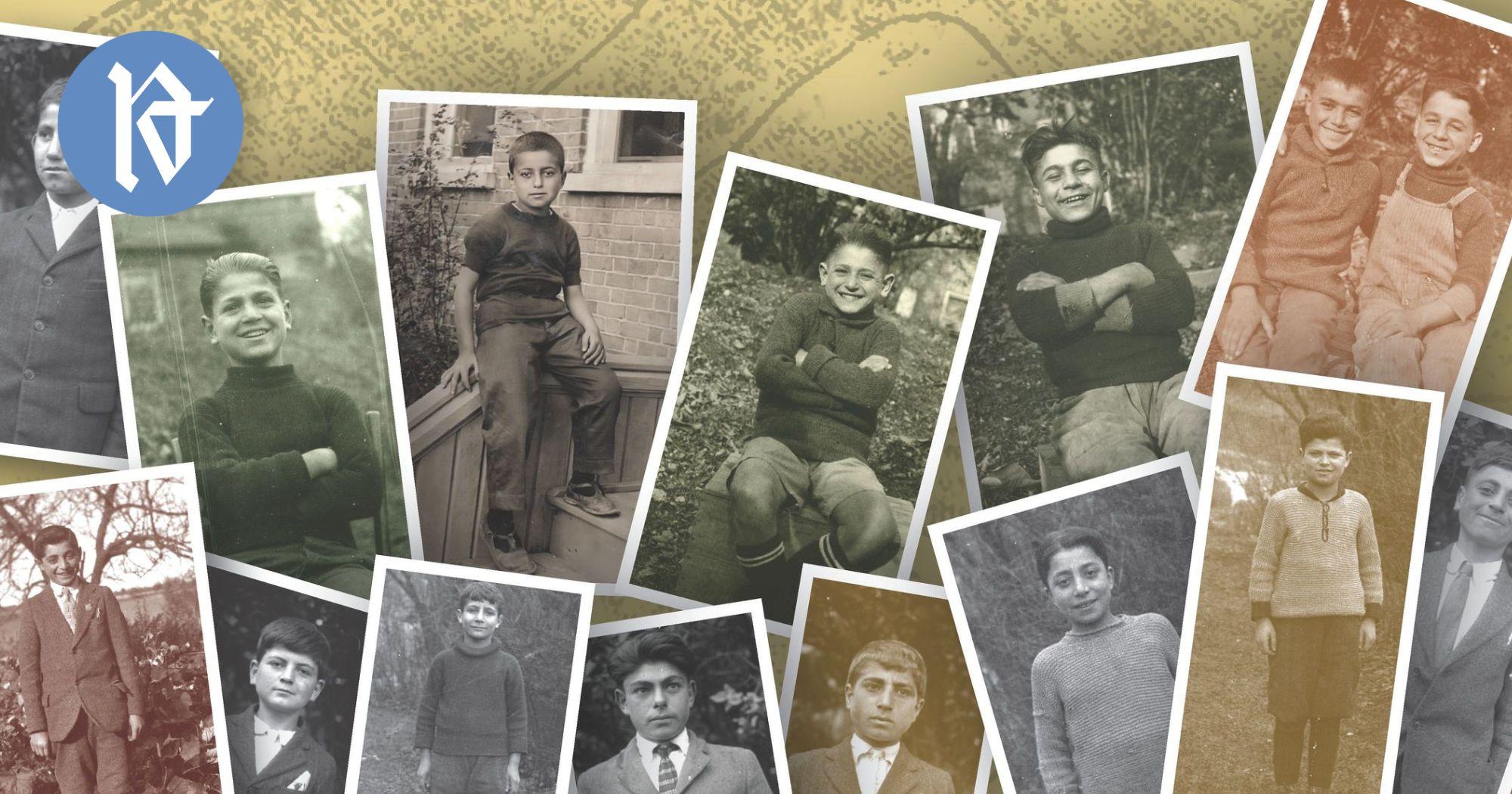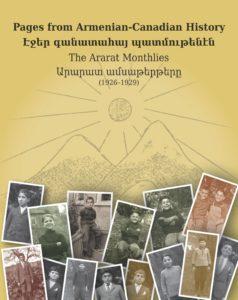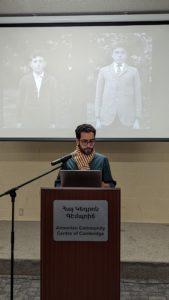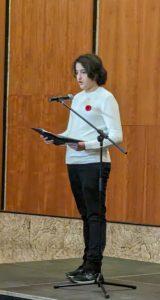TORONTO—On Friday, Nov. 10, and Sunday, Nov. 12, 2023, the Sara Corning Centre for Genocide Education held a pair of book launch events in Cambridge and Toronto, Ontario. The occasion was the debut of its new book Pages from Armenian-Canadian History: The Ararat Monthlies (1926-1929). The events were attended by more than 150 community members, including friends and descendants of the Georgetown Boys, and featured readings from the book.
- The cover of ‘Pages Armenian-Canadian History’ (Image courtesy of the Sara Corning Institute)
- Daniel Ohanian speaks at the book launch event in Cambridge. (Photo courtesy of the Sara Corning Institute)
- Edgar Shahnazarian reads a story by Georgetown Boy Vahe Alexanian (Victor Alexander)(Photo courtesy of the Sara Corning Institute)
During the Armenian Genocide, over 100 years ago, 1.5 million people were killed, and more than half a million were left as refugees, including tens of thousands of orphaned children. Among these orphans were more than 100 boys brought to Canada as part of a humanitarian effort to give them a new life in a new country. The organization that brought them over did so with the intention of teaching them agriculture and skills that would help them flourish on their own. These child survivors—the Georgetown Boys—were raised on a farm in Georgetown, Ontario, centred in what is now known as Cedarvale Park.
The boys formed a strong bond. Despite being sent to farms across the province, they stayed in touch and, with the help of their teacher Aris Alexanian, began to publish a pair of newsletters called Ararat Monthly and Արարատ ամսաթերթ. The publications were meant to help the boys practice their English and Armenian and were sent to subscribers in more than 30 countries.
Little was known about the Ararats for many years. In 2012, the newly formed Sara Corning Centre for Genocide Education received about 35 sheets of the English language version of the newsletter from the Armenian National Committee of Toronto (ANCT). The ANCT had come to own these relics courtesy of Sonya Mackey, daughter of Georgetown Boy Albert Papazian, who had donated them for safekeeping and to help commemorate the history of the Boys. Thus began a decade-long hunt to learn more about these publications and a mission to compile a full anthology.
This long and painstaking effort was spearheaded by the Corning Centre’s Director of Research, Daniel Ohanian, who partnered with Gabriella Batikian and Salpi Garabedian to organize the newsletters into a single book. “The international search for issues of the Ararat newsletters involved emailing, calling, and visiting nearly a hundred people and institutions in five different countries,” Ohanian explained. “Ultimately, we found 45 issues in Canada, Armenia, Austria, France, and the United States. Forty-five issues when we’d previously known of only about 30. All available in one place, which hasn’t been the case in a century.”
Financially, the project was made possible by grants and donations from the National Association for Armenian Studies and Research (U.S.), the Knights of Vartan (U.S.), the Levon Perouz Babayan Foundation, and friends and descendants of the Georgetown Boys.
“The publication of this book is a way of preserving their stories, their thoughts, and their artwork,” said the Corning Centre’s co-chair, Levon Sarmazian. “It is meant to introduce you, the reader, to the Georgetown story and to give you a sense of what the Ararats contained. It is also meant to give researchers some ideas about the kinds of questions that can be asked and answered using this material.”
Pages from Armenian-Canadian History can be purchased from the Hamazkayin bookstore in Toronto and Amazon. A digital copy can be accessed for free through the Corning Centre’s website at corningcentre.org/reference-materials/pages-from-armenian-canadian-history/.




